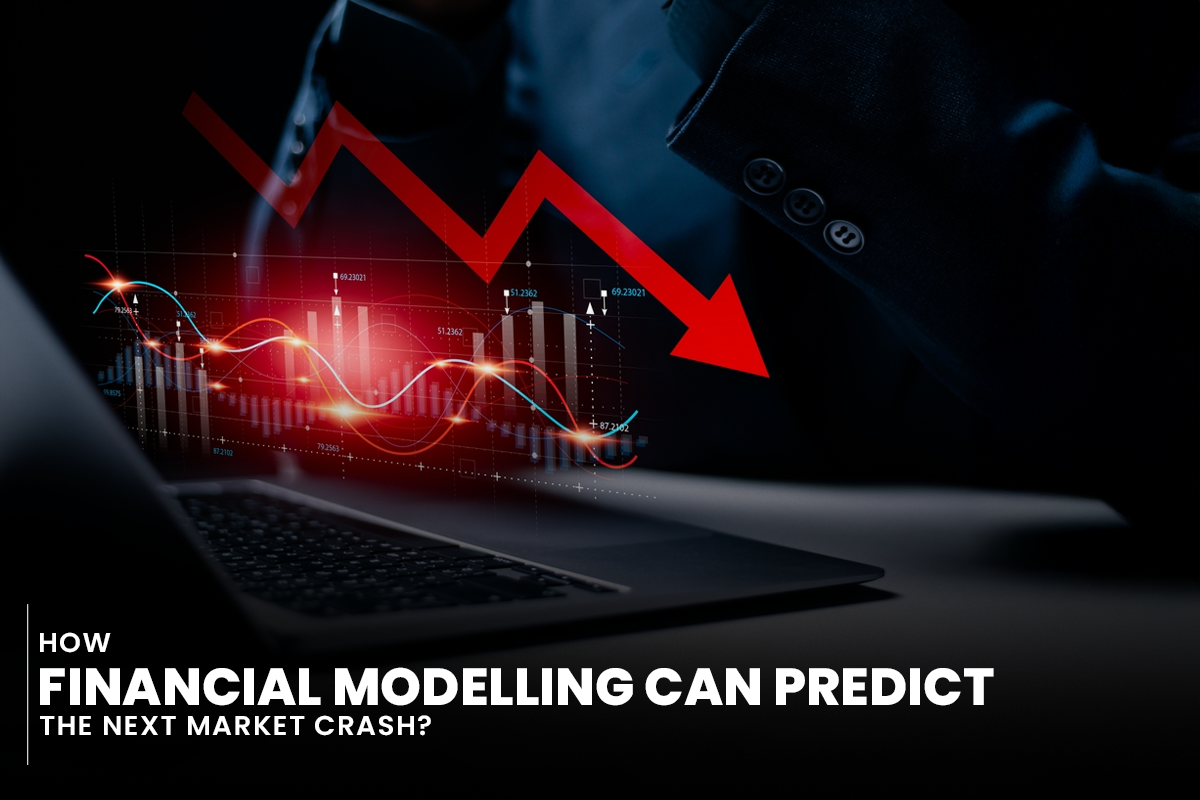A market crash is like an earthquake; you never know exactly when they’ll strike, but the impact is devastating when they do.
What if one morning you wake up to find the stock market has lost half its value overnight? This isn’t a far-fetched scenario—it’s happened before, and it could happen again.
In this blog, we’ll break down what a market crash really is, how it unfolds, and—most importantly—how financial modeling can be a powerful tool in the next market crash prediction.
By leveraging data and economic indicators, financial models can give us critical insights into potential cracks forming beneath the surface of seemingly stable markets.
Curious how? Let’s dive in and explore the link between financial modeling and staying ahead of the next big market collapse.
What is a Market Crash?
A market crash is when the stock market takes a sudden and severe drop, often in a single day or over a short period.
In India, when major indices like the Nifty 50 or Sensex fall by 10% or more, it’s typically considered a crash.
It’s the kind of event that sends shockwaves through the economy, leaving investors and everyday people worried.
But what causes this? A crash can happen due to multiple factors:
- Economic slowdowns
- Global events
- Speculative trading (where stock prices rise too fast and then suddenly fall)
- Investor panic can also add fuel to the fire, triggering mass sell-offs.
So, can anything be done to protect your financial well-being during a market crash?
While you can’t stop the market from falling, you can limit its impact.
- Diversifying your investments
- Maintaining a long-term perspective
- Not reacting in panic can help shield your financial health.
Also, focusing on quality assets—whether in stocks, real estate, or fixed-income securities—can make a big difference in surviving turbulent market conditions.
Financial Modeling and the Next Market Crash Prediction
Financial modeling can be a powerful tool in predicting the next market crash as it offers valuable insights based on data, trends, and economic indicators.
Here’s how it works:
1. Analyzing Key Economic Indicators:
Financial models rely on various economic indicators:
- Interest rates
- Inflation
- Corporate earnings
- GDP growth.
By feeding these data points into predictive models, analysts can detect patterns or red flags, such as slowing growth or rising debt levels, which often signal the start of a market downturn.
2. Historical Data and Patterns:
One of the core strengths of financial modeling is its ability to process historical market data.
Past crashes, like the 2008 financial crisis or the dot-com bubble, share certain common factors.
Financial models look for these patterns such as the overvaluation of stocks or credit bubbles, to help predict when a similar event may occur.
3. Stress Testing the Market:
Financial models can simulate “what-if” scenarios, or stress tests, to evaluate how the market might react to unexpected shocks.
For example, if oil prices were to skyrocket or a global trade war were to break out, the model can predict the potential fallout and give us a sense of how vulnerable the market crash can be.
4. Sentiment Analysis:
Modern financial models can also incorporate investor sentiment, tracking things like:
- Social media trends
- News reports
- Market confidence.
When sentiment turns overly optimistic or pessimistic, It can be a sign of irrational market behavior, which often causes a crash.
While financial models can’t give an exact date for the next market crash, they serve as early warning systems.
By staying alert to these signals, you can make more informed decisions and potentially avoid the brunt of a major downturn.
Conclusion
While no model or tool can guarantee a precise prediction of the next market crash, financial modeling offers a valuable way to stay ahead of potential risks.
By analyzing past data and current trends, it serves as a warning system, giving you a glimpse of what might come.
History often repeats itself, giving you signs of overvaluation and unequal practices, yet these warnings are sometimes overlooked.
History has shown us that markets often repeat certain patterns, and financial models help identify these signals before a crash occurs.
Though market crashes are unpredictable, using financial modeling as a tool allows you to safeguard your investments and make more informed decisions when faced with uncertainty.
It won’t stop a crash, but it can help you navigate through it with a stronger financial strategy.



